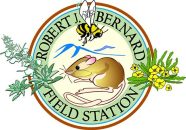Land-Miller, Hayley (2018)
Diet of native harvester ant Pogonomyrmex californicus in Southern California sage scrub and non-native grassland habitats.
Bachelor of Arts, Pomona College, Biology.
Advisor: Nina Karnovsky.
Pogonomyrmex californicus is a harvester ant native to Southern California and present in threatened California sage scrub (CSS) habitat. Its diet in desert habitats consists of mostly a few species of seeds, and its role as a seed predator affects the surrounding plant community. As CSS habitat faces an increasing rate of type-conversion to non-native grasslands, this study sought to compare the diet of this native ant species within CSS and grassland habitats. To do so, I collected ants and their food items in the Bernard Field Station in Claremont, CA. I collected >350 ants with their food items as they carried them back to their nests, sampling from three nests within grassland and four nests within CSS. I identified seeds and all other diet items and performed stable isotope analysis on 140 ants, to identify variation in δ15N and δ13C values of ants from each habitat type. I found 40 different diet items, and discovered that seeds and flowers dominated the diets of all colonies, while vertebrate feces, insect parts, and miscellaneous plant parts were also present. The most common seed and flower species were native species Eriogonum fasciculatum, Eriogonum gracile, Platanus racemosa, and Amsinckia intermedia. The most common non-native species were Erodium cicutarium and Festuca myuros. No non-native Bromus grasses were carried by ants at any nest. The proportions of each diet item type were consistent between the two habitats, but the specific species present varied both within and between habitat types. I found a distinct difference in P. californicus diet in the CSS and grassland. Overall composition of diet items collected differed between the habitats, and ants from the two habitats differed in δ13C as well. Ants in both habitats fed on a high proportion of Eriogonum spp. items, suggesting that they are dependent on resources from the native habitat. I found a higher diet diversity than has been found for other habitats and species of Pogonomyrmex ants.
